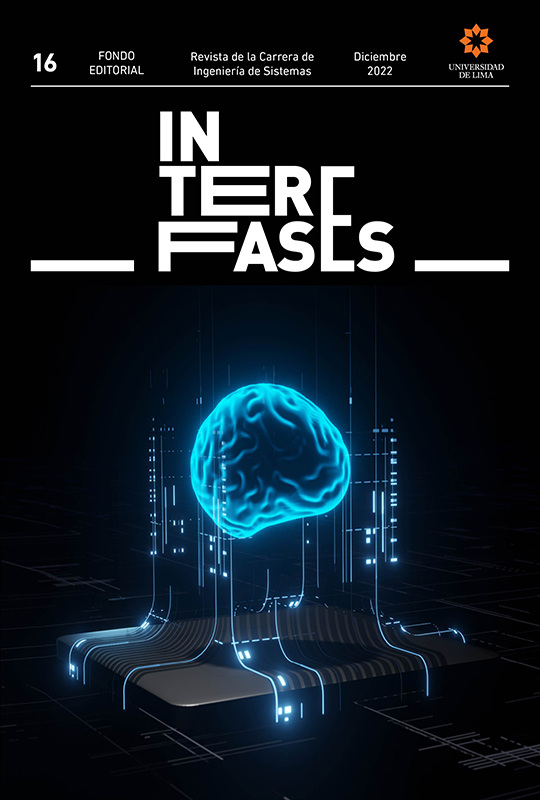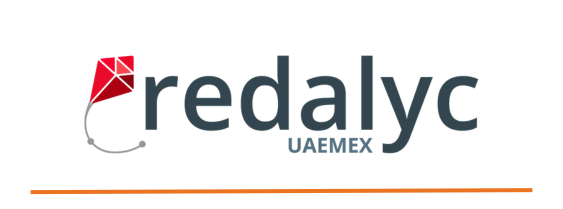Machine learning application for campaigns marketing in commercial banking
DOI:
https://doi.org/10.26439/interfases2022.n016.5953Keywords:
banking, marketing, fixed-term deposits, machine learning, classification algorithmsAbstract
Banks use telemarketing to contact potential customers for their products directly. This sales channel is complex, requiring large databases of possible prospects, and is subject to time and personnel restrictions. This article has three objectives: to compare five prediction models based on machine learning algorithms to find the one that offers the best predictive accuracy, deploy a pilot of this model, and recommend a roadmap for the future architecture that supports it. The comparison results show that the selected algorithm considerably improves the identification of customers who accept the product, which went from 11 % to 94 %, so its implementation can contribute to the competitiveness of these organizations.
Downloads
References
Arango Serna, M. D., Londoño Salazar, J. E., & Zapata Cortés, J. A. (2010). Arquitectura empresarial: una visión general. Revista Ingenierías Universidad de Medellín, 9(16), 101-111.
Asha, R. B., & Kumar, K. R. (2021). Credit card fraud detection using artificial neural network. Global Transitions Proceedings, 2(1), 35-41. https://doi.org/10.1016/j.gltp.2021.01.006
Berrar, D. (2018). Bayes’ theorem and naive Bayes classifier. En Encyclopedia of bioinformatics and computational biology: ABC of bioinformatics (vol. 1, pp. 403-412). Elsevier. https://doi.org/10.1016/B978-0-12-809633-8.20473-1
Data Science Team. (2019). XGBoost. ¿Qué es? https://Datascience.Eu/Es/Programacion/Xgboost-4/
Dutta, S., Bose, P., Goyal, V., & Bandyopadhyay, S. K. (2021). Applying convolutional-GRU for term deposit likelihood prediction. International Journal of Engineering and Management Research, 11(3), 265-272. https://doi.org/10.20944/preprints202007.0101.v1
Goethals, F. G., Snoeck, M., Lemahieu, W., & Vandenbulcke, J. (2006). Management and enterprise architecture click: The FAD(E)E framework. Information Systems Frontiers, 8(2), 67-79. https://doi.org/10.1007/s10796-006-7971-1
Martínez Heras, J. (2020, 9 de octubre). Precision, recall, F1, accuracy en clasificación. IArtificial.net. https://www.iartificial.net/precision-recall-f1-accuracy-en-clasificacion/
Lankhorst, M. (2005). Enterprise architecture at work. Modelling, communication and analysis. Springer.
Miloslavskaya, N., & Tolstoy, A. (2016). Big data, fast data and data lake concepts. Procedia Computer Science, 88, 300-305. https://doi.org/10.1016/j.procs.2016.07.439
Moro, S., Laureano, R., & Cortez, P. (2011). Using data mining for bank direct marketing: An application of the CRISP-DM methodology. En P. Novais, J. Machado, C. Analide & A. Abelha (Ed.), ESM’2011. The 2011 European Simulation and Modelling Conference (pp. 117-121). EUROSIS.
Murty, M. N., & Devi, V. S. (2011). Pattern recognition an algorithmic approach. Springer.
Riedmiller, M., & Braun, H. (1993). A direct adaptive method for faster backpropagation learning: The RPROP algorithm. En IEEE International Conference on Neural Networks (vol. 1, pp. 586-591). DOI: 10.1109/ICNN.1993.298623
Rokach, L. (2016). Decision forest: Twenty years of research. Information Fusion, 27, 111-125. https://doi.org/10.1016/j.inffus.2015.06.005
Saleem, F., & Fakieh, B. (2020). Enterprise architecture and organizational benefits: A case study. Sustainability, 12(19), 8237. https://doi.org/10.3390/su12198237
Singh, A. (2018, 18 de junio). A comprehensive guide to ensemble learning. Analytics Vidhya. https://www.Analyticsvidhya.Com/Blog/2018/06/Comprehensive-Guide-for-Ensemble-Models/.
Zhang, C., Zhang, H., & Hu, X. (2019). A contrastive study of machine learning on funding evaluation prediction. IEEE Access, 7, 106307-106315. https://doi.org/10.1109/ACCESS.2019.2927517
Downloads
Published
Issue
Section
License
Authors who publish with this journal agree to the following terms:
Authors retain copyright and grant the journal right of first publication with the work simultaneously licensed under an Attribution 4.0 International (CC BY 4.0) License. that allows others to share the work with an acknowledgement of the work's authorship and initial publication in this journal.
Authors are able to enter into separate, additional contractual arrangements for the non-exclusive distribution of the journal's published version of the work (e.g., post it to an institutional repository or publish it in a book), with an acknowledgement of its initial publication in this journal.
Authors are permitted and encouraged to post their work online (e.g., in institutional repositories or on their website) prior to and during the submission process, as it can lead to productive exchanges, as well as earlier and greater citation of published work (See The Effect of Open Access).
Last updated 03/05/21






